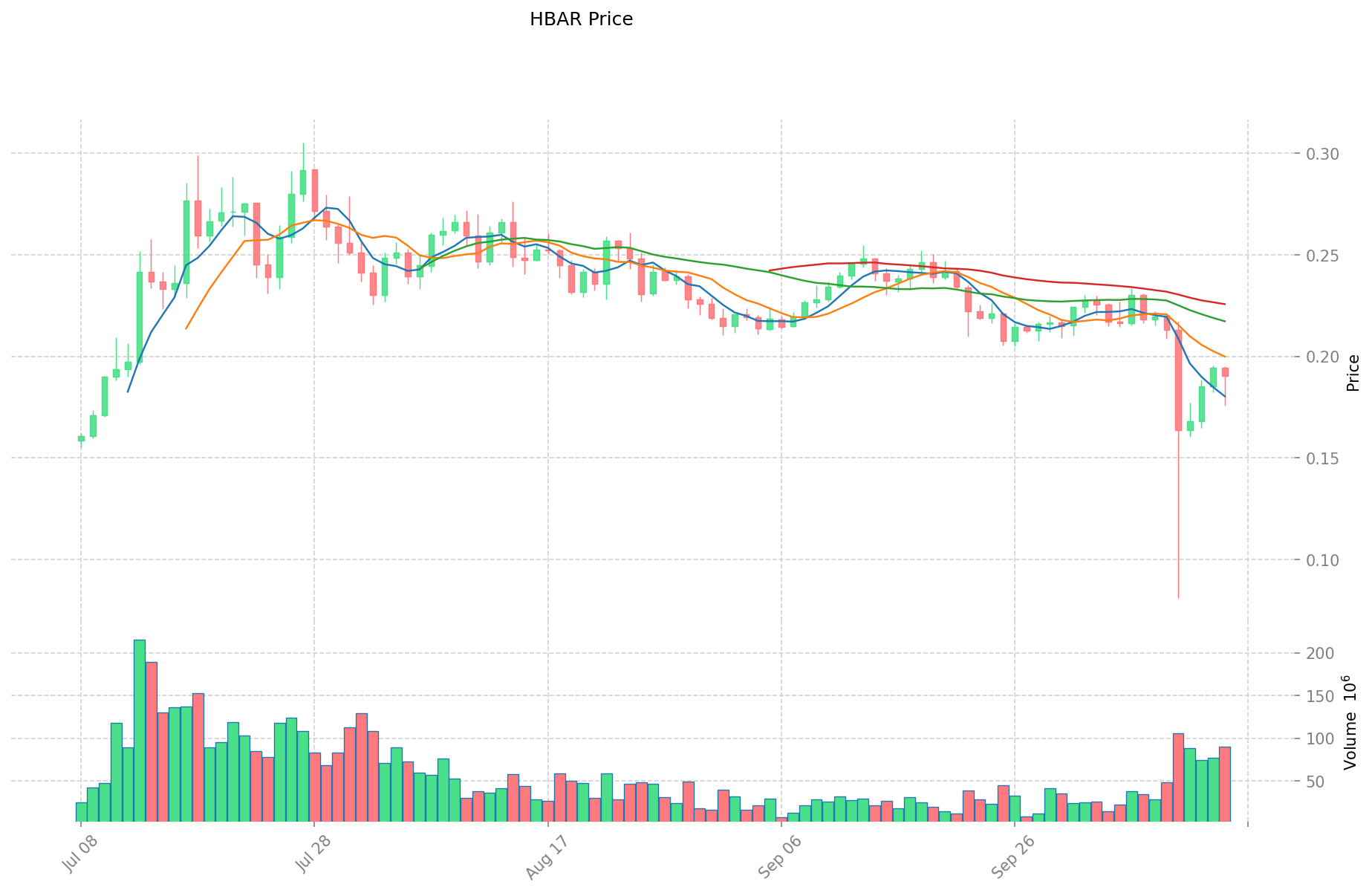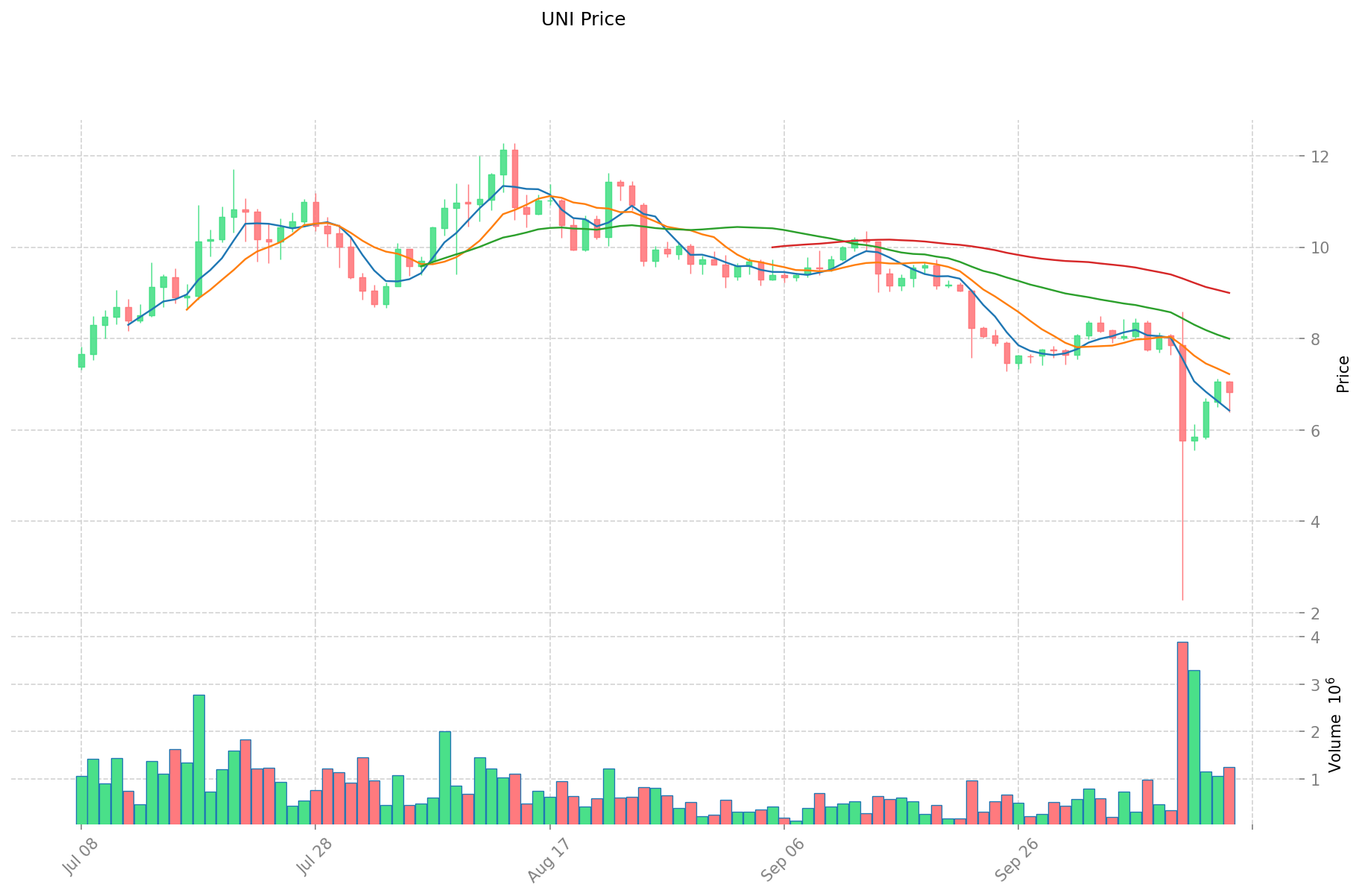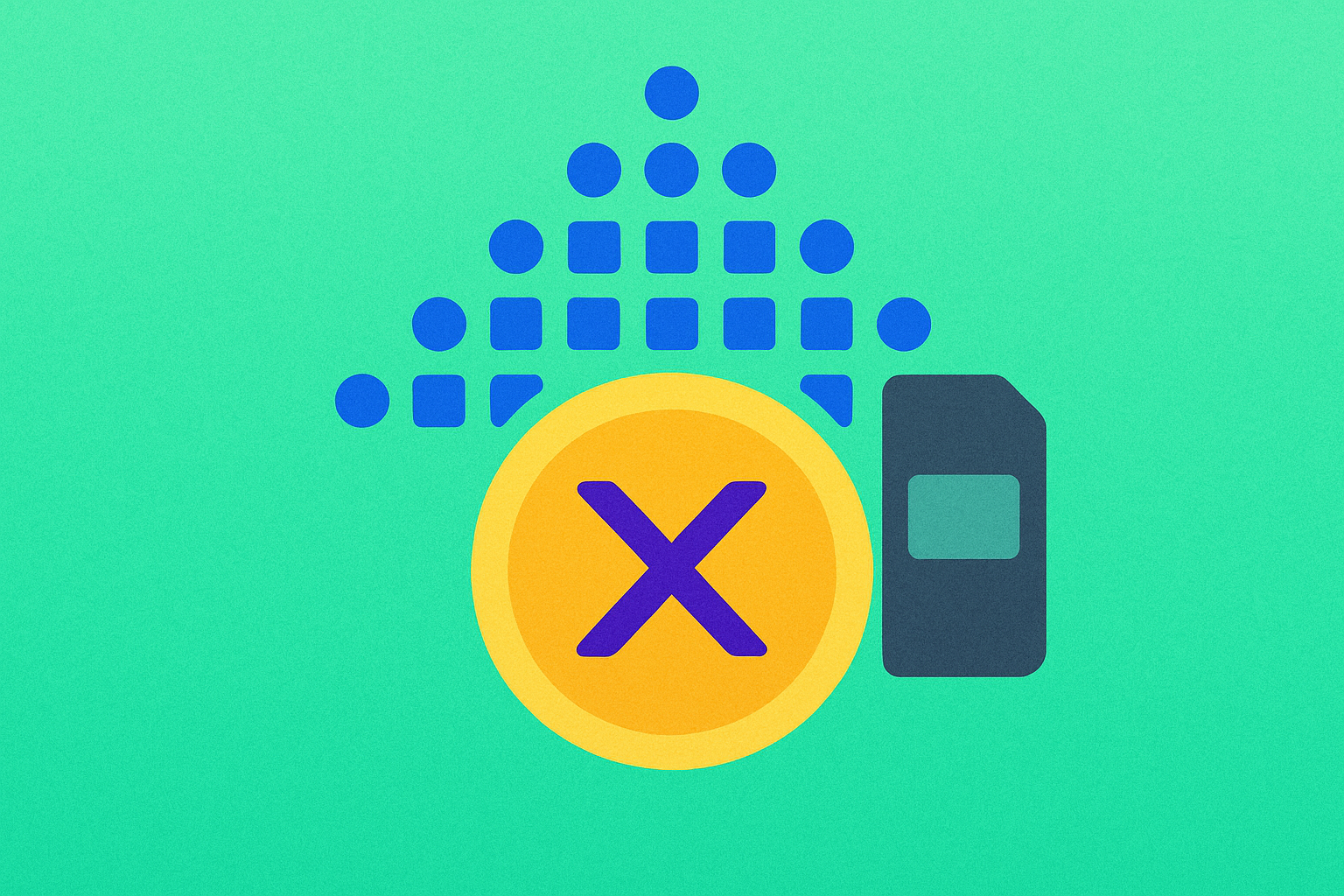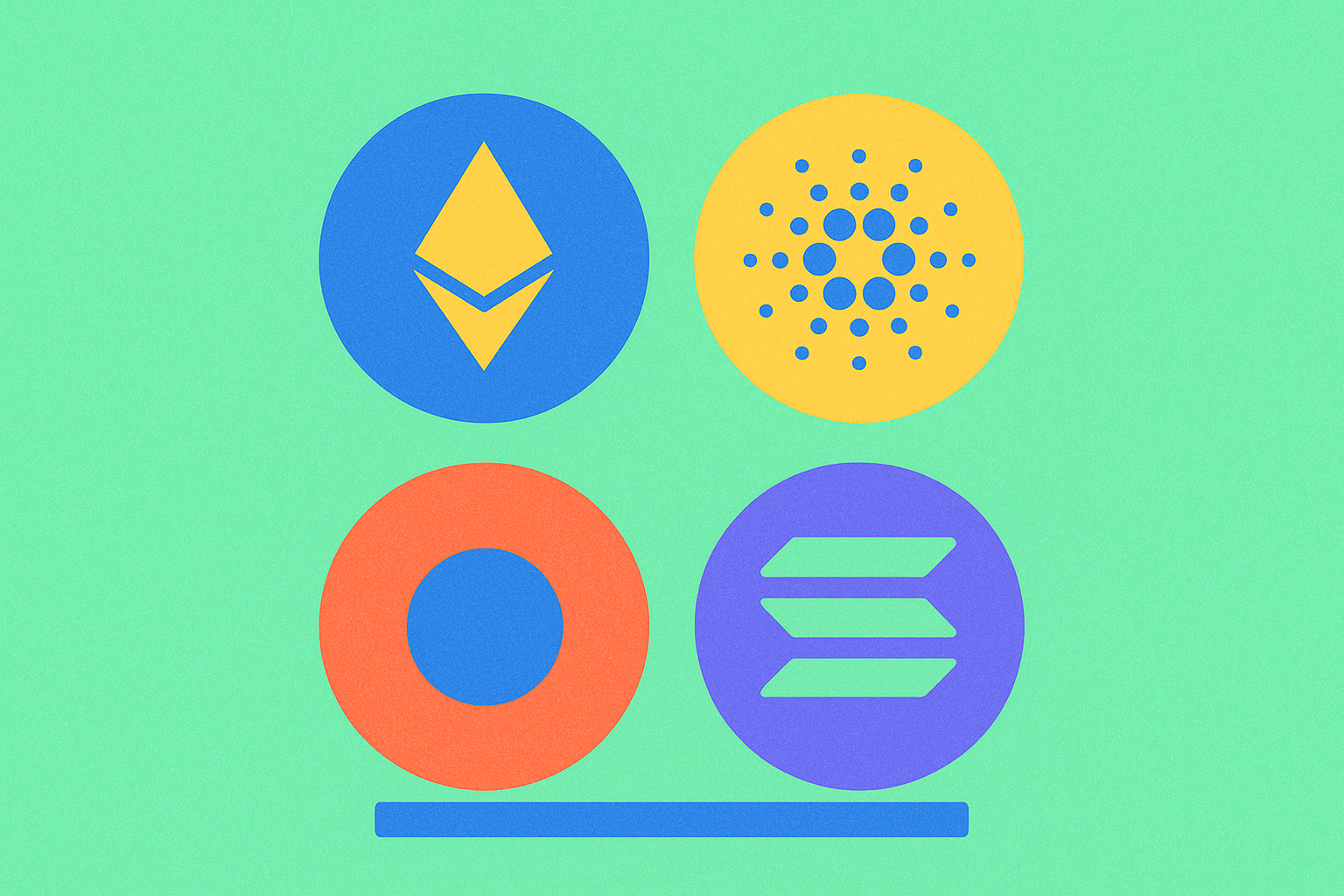HBAR vs UNI: DeFi Ekosisteminde Öne Çıkan İki Kripto Paranın Karşılaştırmalı Analizi

Giriş: HBAR ve UNI Yatırımı Karşılaştırması
Kripto para piyasasında HBAR ve UNI’nin karşılaştırılması, yatırımcılar için her zaman gündemdeki bir başlık olmuştur. Her iki varlık, piyasa değeri sıralaması, kullanım alanları ve fiyat performansları bakımından önemli farklılıklar taşırken, kripto varlıkların pozisyonlanması açısından da farklı yaklaşımları temsil etmektedir.
Hedera (HBAR): 2019 yılında piyasaya sürülmesinden bu yana, hızlı, güvenli ve adil açık defter ağı sayesinde piyasanın dikkatini çekmiştir.
Uniswap (UNI): 2020’de piyasaya çıkan UNI, Ethereum blokzincirinde inşa edilen ilk otomatik piyasa yapıcı protokol olarak adlandırılmış ve küresel çapta en çok işlem gören kripto paralardan biri olmuştur.
Bu makalede, HBAR ve UNI’nin yatırım değeri kapsamlı biçimde karşılaştırılarak; geçmiş fiyat trendleri, arz mekanizmaları, kurumsal benimseme, teknolojik ekosistemler ve gelecek öngörüleri üzerinden yatırımcıların en çok merak ettiği şu soruya odaklanılacaktır:
"Şu anda hangisi daha avantajlı bir alım fırsatı?"
I. Fiyat Geçmişi Karşılaştırması ve Güncel Piyasa Durumu
HBAR ve UNI Geçmiş Fiyat Trendleri
- 2021: HBAR, 15 Eylül 2021’de $0,569229 ile tüm zamanların en yüksek seviyesini gördü.
- 2021: UNI, merkeziyetsiz finans (DeFi) alanındaki büyümeyle 3 Mayıs 2021’de $44,92 zirvesine ulaştı.
- Karşılaştırmalı analiz: 2021 boğa piyasasında, HBAR $0,00986111’den $0,569229’a yükselirken; UNI, $1,03’ten $44,92’ye çıkarak daha güçlü bir performans sergiledi.
Güncel Piyasa Durumu (15 Ekim 2025)
- HBAR güncel fiyat: $0,18813
- UNI güncel fiyat: $6,782
- 24 saatlik işlem hacmi: HBAR $16.579.676, UNI $8.309.173
- Piyasa Duyarlılık Endeksi (Korku & Açgözlülük Endeksi): 34 (Korku)
Canlı fiyatları görmek için tıklayın:
- HBAR güncel fiyatı için Piyasa Fiyatı
- UNI güncel fiyatı için Piyasa Fiyatı


II. HBAR ve UNI Yatırım Değerini Etkileyen Temel Unsurlar
Arz Mekanizması Karşılaştırması (Tokenomik)
- HBAR: Google, IBM, LG ve Boeing gibi sektör devlerinin yer aldığı yönetim yapısıyla kurumsal odaklı tokenomik
- UNI: Uniswap ekosisteminde yönetim hakkı sunan DeFi odaklı token
- 📌 Tarihsel örüntü: Arz mekanizmaları fiyat döngülerini birbirinden farklı etkiler; HBAR, kurumsal destek sayesinde daha istikrarlı bir seyir gösterirken, UNI piyasa temelli volatiliteye daha açıktır.
Kurumsal Benimseme ve Piyasa Uygulamaları
- Kurumsal sahiplik: HBAR, sektörün lider isimlerinin oluşturduğu yönetim konseyiyle daha güçlü kurumsal ilgi görmektedir
- Kurumsal kullanım: HBAR, hızlı ve düşük maliyetli transferlerle kurumsal çözümlere odaklanırken; UNI, DeFi uygulamaları ve merkeziyetsiz borsa işlevselliğiyle öne çıkar
- Regülasyon yaklaşımı: Her iki token farklı regülasyon yaklaşımlarıyla karşılaşsa da, HBAR’ın kurumsal bağlantıları daha fazla regülasyon netliği sağlayabilir
Teknik Gelişim ve Ekosistem Oluşturma
- HBAR teknik odağı: Güvenlik, hız ve düşük işlem maliyetine öncelik veren kurumsal düzeyde dağıtık defter teknolojisi
- UNI teknik gelişimi: Merkeziyetsiz borsa protokolleri ve likidite sağlama konularında inovasyon
- Ekosistem karşılaştırması: HBAR, kurumsal altyapı uygulamalarını hedeflerken; UNI, DeFi ekosisteminin merkezinde yer alır
Makroekonomik Faktörler ve Piyasa Döngüleri
- Enflasyon dönemindeki performans: Her iki varlık yüksek volatiliteye sahip olsa da, genel piyasa trendleriyle korelasyonları farklılık gösterir
- Para politikası etkisi: Faiz oranlarındaki değişimler her iki tokenı da etkiler; HBAR, kurumsal desteği sayesinde daha dirençli olabilir
- Jeopolitik faktörler: Sınır ötesi işlem talebi her iki tokenı da etkilerken, HBAR’ın kurumsal bağlantıları piyasadaki belirsizlik dönemlerinde daha fazla istikrar sunabilir
III. 2025-2030 Fiyat Tahmini: HBAR ve UNI
Kısa Vadeli Tahmin (2025)
- HBAR: Muhafazakâr $0,1275-$0,1875 | İyimser $0,1875-$0,2757
- UNI: Muhafazakâr $3,5043-$6,7390 | İyimser $6,7390-$9,1650
Orta Vadeli Tahmin (2027)
- HBAR’ın büyüme fazına geçmesiyle tahmini fiyat aralığı $0,1716-$0,3511
- UNI için yükseliş piyasasıyla beklenen fiyat aralığı $5,9290-$13,3403
- Ana belirleyiciler: Kurumsal sermaye akışı, ETF’ler, ekosistem gelişimi
Uzun Vadeli Tahmin (2030)
- HBAR: Temel senaryo $0,3249-$0,4577 | İyimser senaryo $0,4577-$0,6087
- UNI: Temel senaryo $10,3114-$16,1116 | İyimser senaryo $16,1116-$18,2061
Feragatname: Bu analiz, tarihsel verilere ve piyasa öngörülerine dayanmaktadır. Kripto para piyasaları yüksek volatiliteye ve belirsizliğe sahiptir. Bu bilgiler yatırım tavsiyesi niteliğinde değildir. Yatırım kararı vermeden önce kendi araştırmanızı mutlaka yapınız.
HBAR:
| 年份 | 预测最高价 | 预测平均价格 | 预测最低价 | 涨跌幅 |
|---|---|---|---|---|
| 2025 | 0.2756544 | 0.18752 | 0.1275136 | 0 |
| 2026 | 0.296431616 | 0.2315872 | 0.157479296 | 23 |
| 2027 | 0.35113251264 | 0.264009408 | 0.1716061152 | 40 |
| 2028 | 0.430599344448 | 0.30757096032 | 0.2276025106368 | 63 |
| 2029 | 0.54624602552832 | 0.369085152384 | 0.23252364600192 | 96 |
| 2030 | 0.608695233311692 | 0.45766558895616 | 0.324942568158873 | 143 |
UNI:
| 年份 | 预测最高价 | 预测平均价格 | 预测最低价 | 涨跌幅 |
|---|---|---|---|---|
| 2025 | 9.16504 | 6.739 | 3.50428 | 0 |
| 2026 | 10.5761866 | 7.95202 | 6.2820958 | 17 |
| 2027 | 13.340308752 | 9.2641033 | 5.929026112 | 36 |
| 2028 | 14.57984577354 | 11.302206026 | 6.10319125404 | 66 |
| 2029 | 19.2821285906573 | 12.94102589977 | 9.3175386478344 | 90 |
| 2030 | 18.206082287091424 | 16.11157724521365 | 10.311409436936736 | 137 |
IV. Yatırım Stratejisi Karşılaştırması: HBAR ve UNI
Uzun Vadeli ve Kısa Vadeli Yatırım Stratejisi
- HBAR: Kurumsal benimseme ve altyapı potansiyeline odaklanan yatırımcılar için uygundur
- UNI: DeFi büyümesi ve merkeziyetsiz borsa ekosistemleriyle ilgilenen yatırımcılar için uygundur
Risk Yönetimi ve Varlık Dağılımı
- Temkinli yatırımcılar: HBAR %60 - UNI %40
- Agresif yatırımcılar: HBAR %40 - UNI %60
- Koruma/hedge araçları: Stablecoin tahsisi, opsiyonlar, çoklu-token portföyü
V. Potansiyel Risk Karşılaştırması
Piyasa Riski
- HBAR: Kurumsal benimseme ve piyasa döngülerine olan bağımlılık
- UNI: DeFi piyasası trendleri ve Ethereum ekosistemine bağlı volatilite
Teknik Risk
- HBAR: Ölçeklenebilirlik ve ağ istikrarı
- UNI: Akıllı sözleşme açıkları, Ethereum ağında tıkanıklık
Regülasyon Riski
- Küresel regülasyon politikaları, her iki token üzerinde farklı etkiler oluşturabilir
VI. Sonuç: Hangisi Daha İyi Alım?
📌 Yatırım Değeri Özeti:
- HBAR avantajları: Kurumsal destek, hızlı ve düşük maliyetli işlemler, kurumsal yatırım potansiyeli
- UNI avantajları: DeFi’de güçlü konum, merkeziyetsiz yönetim, likidite sağlama teşvikleri
✅ Yatırım Tavsiyesi:
- Yeni yatırımcılar: Kurumsal destek avantajı nedeniyle HBAR’a bir miktar ağırlık vererek dengeli bir portföy oluşturabilir
- Deneyimli yatırımcılar: Her iki tokendeki fırsatları değerlendirebilir, piyasa trendlerine göre dağılımı ayarlayabilir
- Kurumsal yatırımcılar: Kurumsal bağlantıları ve potansiyel regülasyon avantajları nedeniyle HBAR’ı öne çıkarabilir
⚠️ Risk Uyarısı: Kripto para piyasaları son derece dalgalıdır. Bu makale yatırım tavsiyesi değildir. None
VII. SSS
S1: HBAR ve UNI arasındaki temel farklar nelerdir? C: HBAR, güvenlik, hız ve düşük işlem maliyetine odaklanan kurumsal düzeyde dağıtık defter teknolojisine odaklanır. UNI ise merkeziyetsiz finans (DeFi) uygulamaları ve merkeziyetsiz borsa işlevselliği üzerinde yoğunlaşır.
S2: Hangi token geçmişte daha iyi fiyat performansı gösterdi? C: 2021 boğa piyasasında UNI, $1,03’ten $44,92’ye çıkarak daha güçlü bir performans sundu; HBAR ise $0,00986111’den $0,569229’a yükseldi.
S3: HBAR ve UNI’nin arz mekanizmaları nasıl farklılık gösteriyor? C: HBAR, sektör devleriyle kurumsal odaklı bir tokenomik ve yönetişim yapısına sahipken; UNI, Uniswap ekosisteminde yönetim hakkı sunan DeFi odaklı bir tokendir.
S4: Uzun vadeli yatırım için hangi token daha uygun? C: HBAR, kurumsal benimseme ve altyapı potansiyeline odaklanan yatırımcılar için daha uygun olabilir; UNI ise DeFi büyümesi ve merkeziyetsiz borsa ekosistemine ilgi duyanlara hitap eder.
S5: HBAR ve UNI yatırımlarında temel riskler nelerdir? C: HBAR’ın riskleri arasında kurumsal benimseme ve piyasa döngülerine olan bağımlılık yer alırken, UNI’nin riskleri DeFi piyasa trendleri ve Ethereum ekosistemindeki gelişmelere bağlıdır. Her iki varlık da regülasyon riskine açıktır.
S6: HBAR ve UNI arasında kurumsal sahiplik nasıl karşılaştırılır? C: HBAR, sektör liderlerinin oluşturduğu yönetim konseyiyle daha güçlü kurumsal ilgi görürken; UNI’nin kurumsal sahipliği daha çok piyasa temellidir.
S7: 2030 yılı için HBAR ve UNI fiyat tahminleri nedir? C: 2030’da, HBAR’ın $0,3249-$0,6087; UNI’nin ise baz ve iyimser senaryolara göre $10,3114-$18,2061 aralığına ulaşması beklenmektedir.

Avalanche (AVAX) 2025 Fiyat Analizi ve Piyasa Trendleri

FTT Açıklaması

2025 PYTH Fiyat Tahmini: Oracle Network Token’ın Piyasa Trendleri ve Büyüme Potansiyeli Analizi

2025 VELO Fiyat Tahmini: Piyasa Trendleri ve Bir Sonraki Boğa Koşusuna Yönelik Potansiyel Büyüme Faktörlerinin Analizi

2025 W Fiyat Tahmini: Küresel W Endeksinin Piyasa Eğilimleri ve Gelecekteki Değerlemesinin Analizi

2025 YFI Fiyat Tahmini: Yearn Finance Token’ı için Olası Büyüme Dinamikleri ve Piyasa Analizi

Blokzincir tabanlı ödeme platformları arasında lider konumda olan Pundi X'i incelemek

Merkeziyetsiz Yönetim Token'ları: Genel Bakış ve Potansiyelleri

Phaver'ı Keşfedin: Web3 dünyasında en gelişmiş sosyal deneyimi yaşayın

Marlin’in ana kripto para birimi Pond Coin (POND) ile ilgili kapsamlı bir rehber

2025 yılında büyüme potansiyeli açısından keşfetmeye değer en iyi 3 Meme Coin







